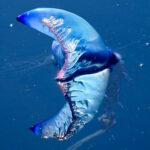In 99% of our whale watching tours in Tenerife, we can see groups of short-finned pilot whales. This is because the Teno-Rasca Special Marine Conservation Area is the area with the highest density of resident pilot whales in the world, with a total of about 400 individuals. This population remains stable over the years.

Some of the most curious facts about the short-finned pilot whales are:
- They form large groups, between 15 and 20 individuals. The females live in this area of Tenerife all their lives, but the males, when they are sexually mature, travel in groups or alone in search of females from other families.
- Despite its name, we are talking about the second largest dolphin in the ocean. This difference is due to taxonomy, which separates dolphins from whales by the fact that they have teeth (like ours) or have baleen.
- They are more active at night, because this is the time when they go down to great depths (up to 1000m) to hunt. They feed on giant squid and octopus from great depths. Each pilot whale ingests an average of 35 kg of food daily.
- During the day we find them on the surface in a very calm attitude. Only their dorsal fin can be seen as they stand still, trying to recover as much energy as possible.
- Their breathing is not a reflex action as it is in our case, they need to think about each breath they take. For this reason, it is said that they take micro naps on the surface, while half the brain remains active and the other half rests. This allows them to keep in touch with their family and stay alert.
- Thanks to our collaboration and other companies in the area, Calderones de Canarias has produced a pilot whale identification catalogue. Through the photo identification technique, we observe that each dorsal fin is different, like our fingerprints. This allows us to monitor the population, so we know the size of the population in the area and its status. In addition, each of them has a name such as: Daniel, Furk, Nico…
- These are matriarchal societies. The oldest female in the group, the grandmother, guides the rest of the family members to the areas with the most food and the most protection.
- Males have a life expectancy of between 40 and 45 years, while females live around 60-65 years.
- Females stop breading at the age of 45, but can produce milk throughout their lives to feed the rest of the family’s young. After being fertile, they go through menopause, being one of only 6 species in the world to experience this process.
 Booking
Booking








